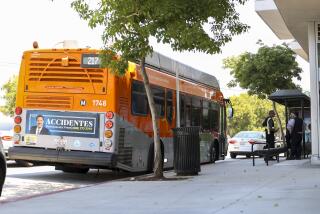FERC OKs Upgrade of Electricity Route
WASHINGTON — U.S. energy regulators approved a $300-million project to ease congestion on a California electric transmission route that’s been blamed for some of the blackouts during the state’s power crisis last year.
The Federal Energy Regulatory Commission said the project, announced by Energy Secretary Spencer Abraham in October, will bring more power to the northern part of the state.
The California Public Utility Commission had requested that the project be rejected because state regulators haven’t shown it’s necessary.
“The need of this line has been made and proven,” FERC Chairman Pat Wood said Wednesday at the commission’s meeting.
Congestion on the existing transmission line, known as Path 15, played a role in California’s rolling blackouts last year. At that time, capacity problems on Path 15 limited the flow of electricity to Northern California from Southern California, which then had a surplus of electricity.
The existing line is owned by Pacific Gas & Electric and is located near Los Banos in California’s Central Valley.
Since the original October agreement, Kinder Morgan Inc., Williams Cos., PG&E; Corp.’s National Energy Group and Transmission Agency of Northern California have backed out of the project “for various business reasons,” said LaVerne Kyriss, a spokeswoman for the Western Area Power Administration. The agency is part of the Energy Department and is managing the project.
Western Area Power Administration, which will spend about $1.5 million on the project, will own the new line and have the remaining transmission rights, Kyriss said. The agency already operates 17,000 miles of transmission lines.
In addition, Trans-Elect Inc. and PG&E; Corp. utility Pacific Gas & Electric are building a new line and upgrading facilities. The project, which will provide power for 1.5-million households, will be completed by the summer of 2004, Kyriss said.
Trans-Elect has agreed to pay for most of the project in exchange for 72% of the transmission rights, which the company can use or sell.
More to Read
Inside the business of entertainment
The Wide Shot brings you news, analysis and insights on everything from streaming wars to production — and what it all means for the future.
You may occasionally receive promotional content from the Los Angeles Times.










